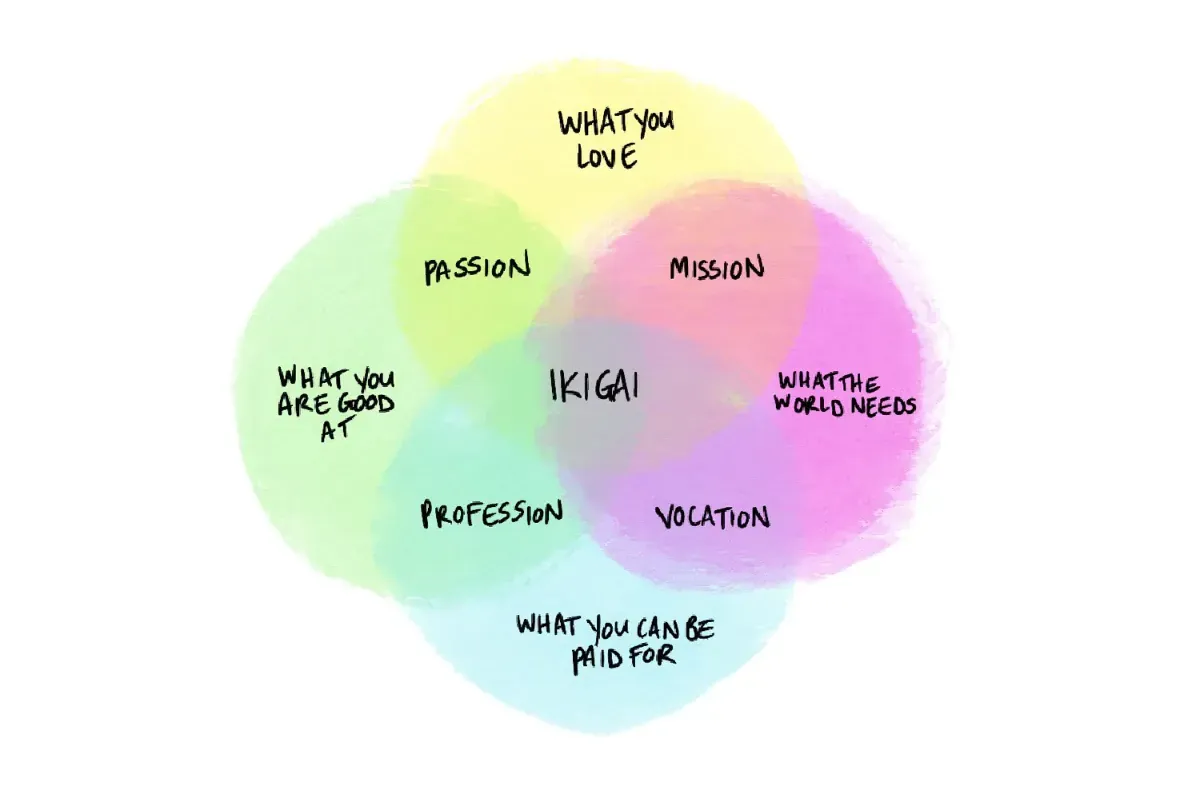Feeling unfulfilled? The Japanese concept of ‘ikigai’ could reveal your true purpose
Written by

Here’s a newsflash: making a living in the arts isn’t easy. And, as with any career, there are points where you’ll need to make tough decisions about your next move. Are you going to go back to study? Take on a mentor? Move to another city? There are endless options out there, and every single time you decide to do something, you are deciding not to do something else.
It can all be a bit overwhelming, so I got in touch with Dr Nick Marsh—a strategic facilitator, author and former Director of the Auckland University MBA programme—to ask for some advice on decision-making strategies. Nick’s switched careers a few times, started businesses and is a mentor on The Big Idea's Mentoring in the Arts Project. Over the years, he’s learned a few things. Here’s what I took from our conversation.
What matters
Basically, you need two things for a successful career in the arts. You need to make a living, and you need to be happy.
There are two ways you can make a living as a creative. The first way is to make money from your creative endeavors — whether that’s through people buying your work, paying you to create, or paying you for some other aspect of your artistic skills. The second is to create art to follow your muse, and make your income through other means.

Photo by Javier Allegue Barros on Unsplash.
There’s nothing wrong with either approach, but Nick reckons you need to make a decision about which one you’ll take by the time you’re 30. If you’re still floating from one to the other past that age, things can get a bit hairy.
On the other hand, your 20s are great for the opposite reason: it’s a time for experimenting, trying out different ways of making a living and figuring out what it is you really want. The impacts of any decision on the rest of your life are relatively lower than they are when you’re older, so it’s the perfect time for trying new things.
But then, that creates another question: how do you decide which path to pursue?
It’s about the Ikigai
On the Japanese island of Okinawa, life expectancy is unusually high. When researchers looked into why this was the case, they found that residents of Okinawa were very keen on the concept of the Japanese concept of ikigai. There isn’t an equivalent in English, but it roughly translates to “your reason for being”, or “the thing you live for”. Nick’s a big fan of it.
To find your Ikigai, ask yourself these four questions:
-
What do you love?
-
What does the world need?
-
What can you be paid for?
-
What are you good at?
When all four intersect, that’s your ikigai. It’s the intersection between what you love, what the world needs, what you’re good at and what you can be paid for. If you can find something that meets all these criteria, that’s the key to a sustainable, artistic life.
Illustration by Jessica Thompson Carr (AKA Māori Mermaid)
These questions are actually easier to answer than you might realise. The things you love and the things you’re good at don’t change much over time—they’re a fairly fixed part of your personality—so you should be able to identify these things clearly.
If you can find something that meets all these criteria, that’s the key to a sustainable, artistic life.
The answers to the last two questions will change over time. The things the world needs will shift, as will the things that people are willing to pay for. So you need to periodically check back in to make sure you’re staying true to your ikigail.. But it’s also about compromise
Of course, Nick was realistic about the fact that not everybody finds their ikigai, but, he says, it’s a good framework for decision making. Let’s say you’re unhappy with your current job, your lifestyle, the work you’re creating, or something else. You could just make a change at random and hope for the best. But a more strategic approach would be to consider the questions above, and really ask yourself what needs to change to bring yourself closer to where you want to be.

Nick Marsh.
For example, you might be unhappy with the work you’re producing in your job. But take that a step further: are you unhappy with it because you feel like it’s not what the world needs? Or are you unhappy with it because you’re not being paid enough to do it? If it’s the former, then you might want to switch careers entirely. If it’s the latter, then you might make finding a similar job that pays more the goal.
These are important decisions, and they have very different implications. So thinking about ikigai lets you make them with your eyes open.
Putting ikigai to work
When you find yourself wondering what comes next, consult your ikigai.
When you find yourself wondering what comes next, consult your ikigai. Ask yourself which area of the diagram is currently unfulfilled. Then, map that to what you expect to get out of the decision in front of you. If everything stacks up, take the leap! You’re only young once, and now’s the time to make bold moves to set yourself up for the future you want.

